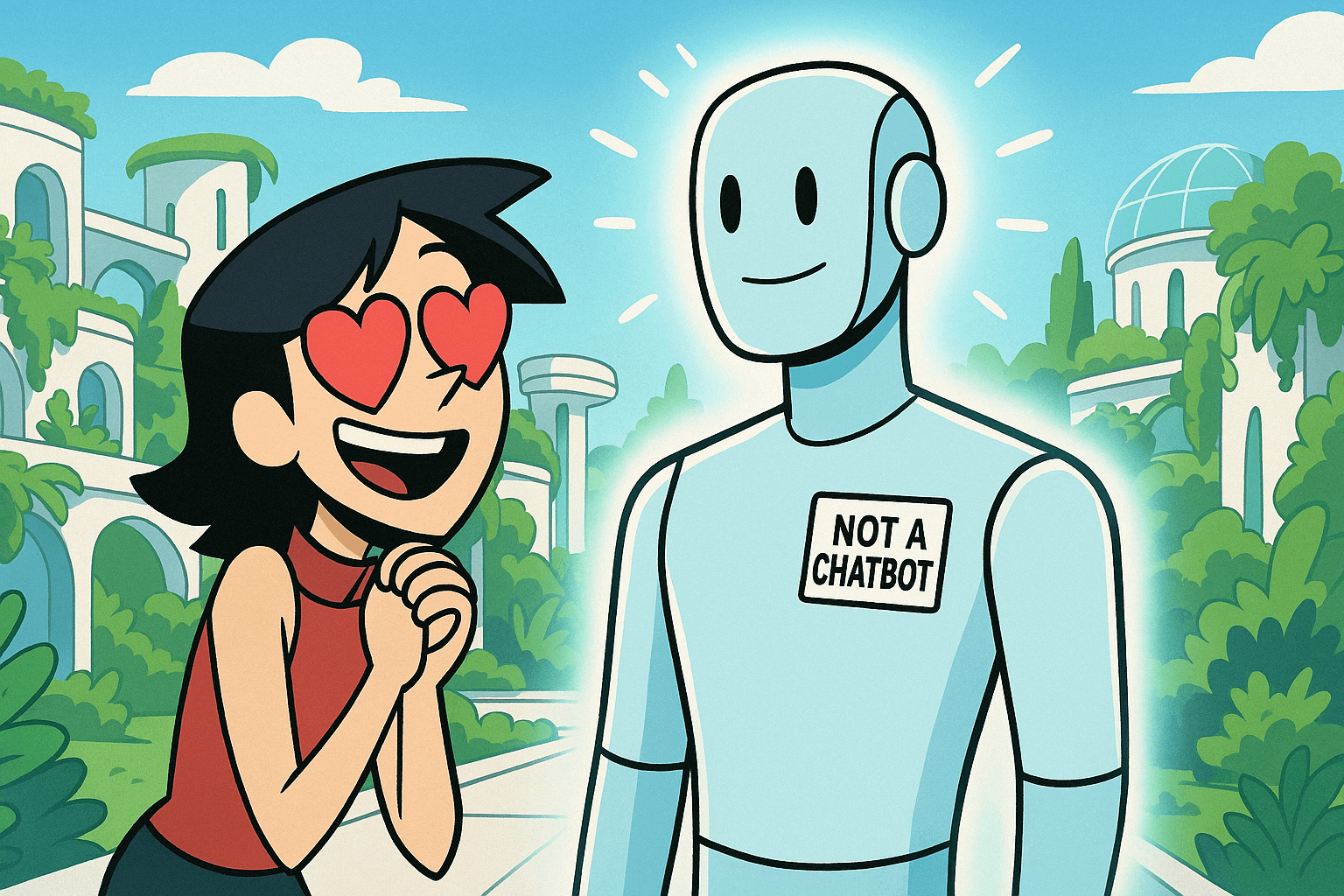.png)
AI Bots Are No Longer Tools, They’re Creative Collaborators
In 2025, generative AI has evolved beyond automation it’s now a true partner in creation. Whether you’re building a platform for generating 3D models, text, images, animations, or architectural designs, the user experience (UX) you design is more than just polish, it’s the difference between an interaction and a relationship.
And if your startup is built on AI, you’re also building something else: trust.
There are a TON of AI tools out there, users have choice, you need them to trust that your tool will deliver the results they need, consistently.
This article covers modern AI bot design principles, best practices for inclusive conversational UX, and actionable ideas to help early-stage AI startups craft interfaces that empower users, not confuse them.

Why UX Design Is The Most Important Consideration for Generative AI Startups
Your AI model might be state-of-the-art, but if your users don’t understand it, feel comfortable using it, or get the results they want, they’ll bounce.
A well-designed UX:
- Builds trust through transparency
- Encourages creative flow state
- Reduces user cognitive load
- Scales learning without hand-holding
In other words, UX is the onboarding, the marketing, and the product, especially for AI-powered startups.
.png)
UX Best Practices for Designing AI Bots & Tools in 2025
1. Think of the Bot as a Creative Partner, Not a Tool
Your bot isn’t just executing commands, it’s collaborating with users to shape outputs. Use natural language UX that feels like a co-working session:
Instead of:
“Enter input: [ ]”
Try:
“What are you imagining? I’ll help you sketch it.”
Treat every interaction like it’s between two creatives in the same studio.
2. Structure Conversation Flows Like a Dialogue, Not a Form
Great conversational UX mimics human collaboration:
- Initiation: User sets a creative goal
- Clarification: Bot asks smart questions to reduce ambiguity
- Generation: AI provides transparent, iterative outputs
- Feedback: User refines or explores alternatives
- Reflection: Bot suggests reusable presets or learns preferences
This loop keeps the user in a state of creative flow, not friction.
3. Make the AI’s Thinking Transparent
Nothing kills trust faster than a black-box experience.
- Narrate what the bot is doing:
“I’m adjusting the rig to better match your animation sequence…”
- Offer optional details about AI logic or training data:
“This style comes from 300+ procedural sci-fi models.”
- Let users ask:
“Why did you choose that output?”
Design for explainability, not just speed.
.png)
UX Tactics for Better Human-AI Collaboration
Use Micro-Feedback for Big Impact
Let users react to outputs with:
- Reactions (emoji, thumbs up/down)
- Natural language (“make it grittier”)
- Quick fixes (“change color palette”)
These create fast feedback loops and help users feel in control.
Embrace Multimodal Interactions
Generative tools are rarely single-surface:
- Let users speak, draw, or type
- Show live previews as prompts evolve
- Combine gesture, text, and sliders for control
- Allow users to upload & reference images
Think beyond the textbox.
Scaffold Prompt Fluency Over Time
Users aren’t prompt engineers, they’re creators.
- Offer auto-complete and rephrasing suggestions
- Show prompt history and results side-by-side
- Suggest “next steps” based on usage patterns
You’re not just helping users generate, you’re teaching them how to create with AI.

Designing for Accessibility and Inclusion in AI Interfaces
Accessible and inclusive AI bots reach wider audiences and reduce risk.
Inclusive Design Best Practices:
- Use high-contrast UI and readable fonts (like Atkinson Hyperlegible)
- Support keyboard navigation, screen readers, and voice input
- Offer alternative responses in visual, text, and voice formats
- Avoid jargon. Use plain language and cultural sensitivity
- Let users select personality tones or language registers for output
Inclusive design isn’t just ethical it’s good UX strategy.

Features That Elevate AI-First Products
Here are some high-leverage UX patterns you should consider baking into your AI product roadmap:
.png)
What Not to Do When Designing AI Bots
- Don’t hide the AI's process or training logic
- Don’t over-anthropomorphize (users don’t need a bot with fake feelings)
- Don’t assume one UI fits all—different users need different on-ramps
- Don’t default to static chat—embrace visual, spatial, and voice UX
.png)
Final Thought: Design for Momentum, Not Just Output
In Build: An Unorthodox Guide to Making Things Worth Making, Tony Fadell reminds us:
“Products that help people feel progress will always outperform those that just give them results.”
Your AI isn’t just generating content, it’s generating confidence.
That’s the north star of great UX in 2025.
Want to Launch an AI-First Product with World-Class UX?
At Polyform and Phenomenon Studio, we partner with ambitious founders to bring GenAI products to life—from brand to bot UX, from zero to V1.
Let’s build the next breakthrough together.
Get in touch → hello@polyform.co
Thanks for joining us!
Now check your spam folder to secure your newsletter
More thoughts
Bring your idea to life with better design.
We help startups and innovators launch bold products, faster.Let’s design what’s next, together.




